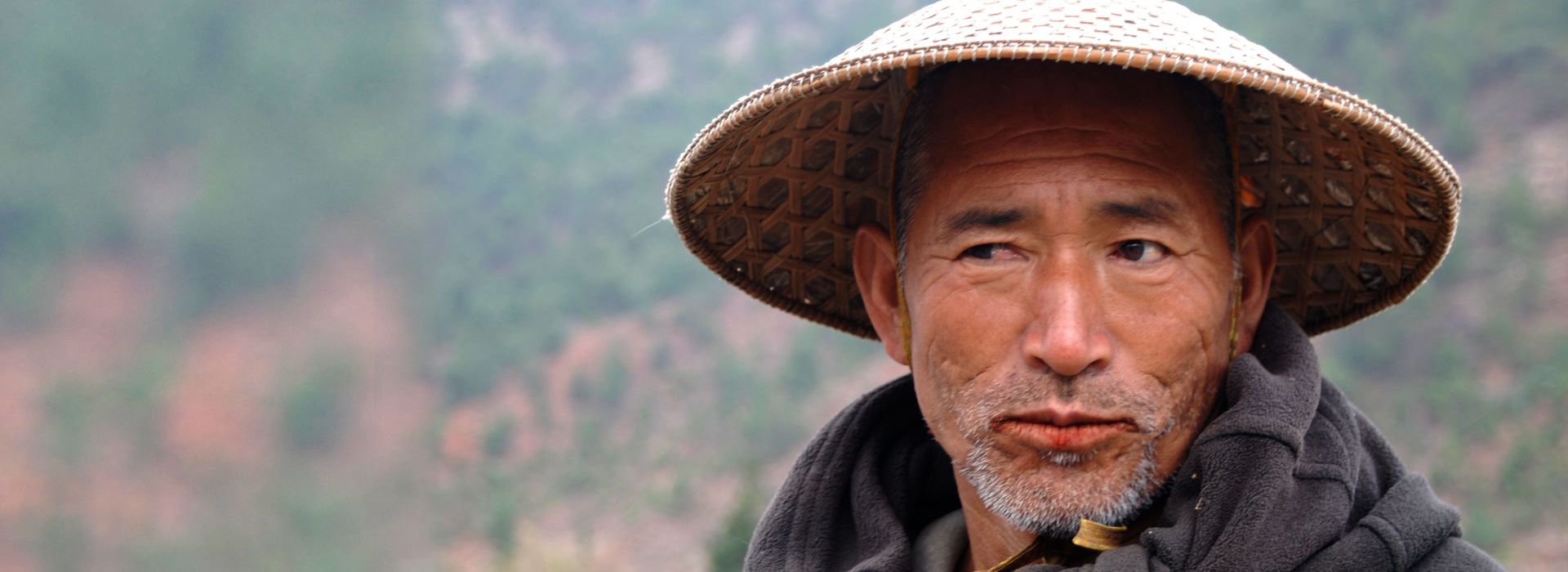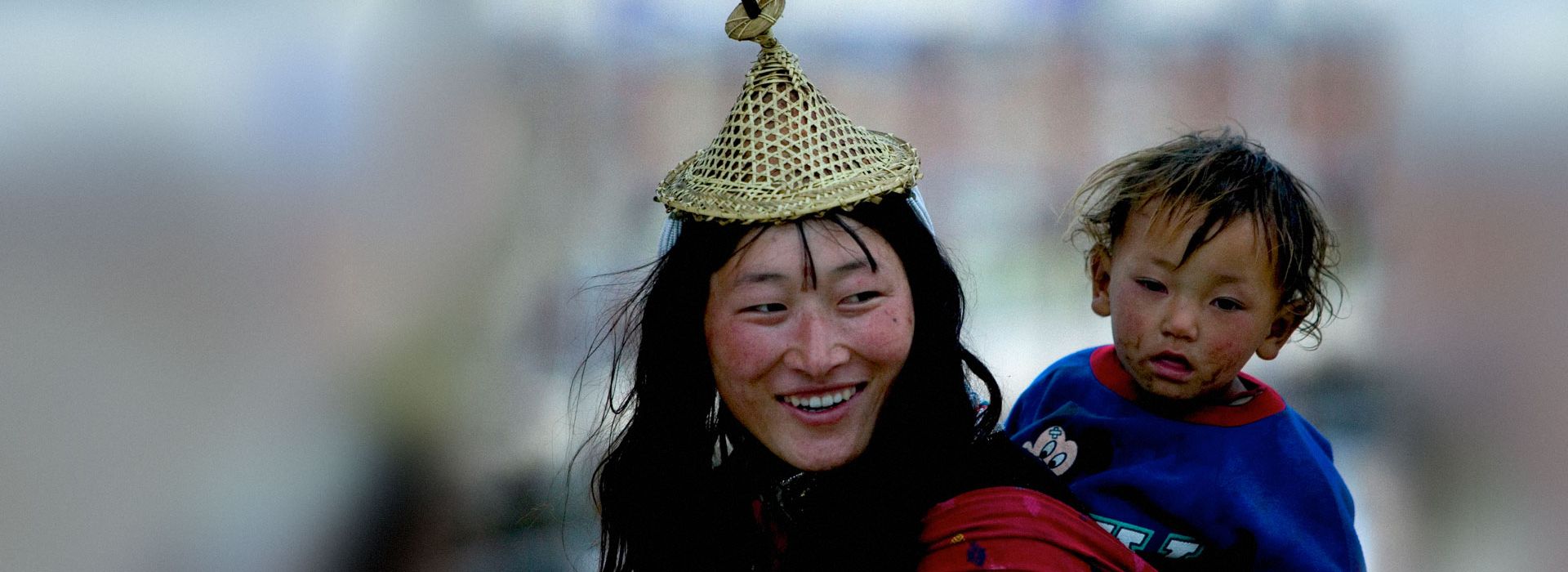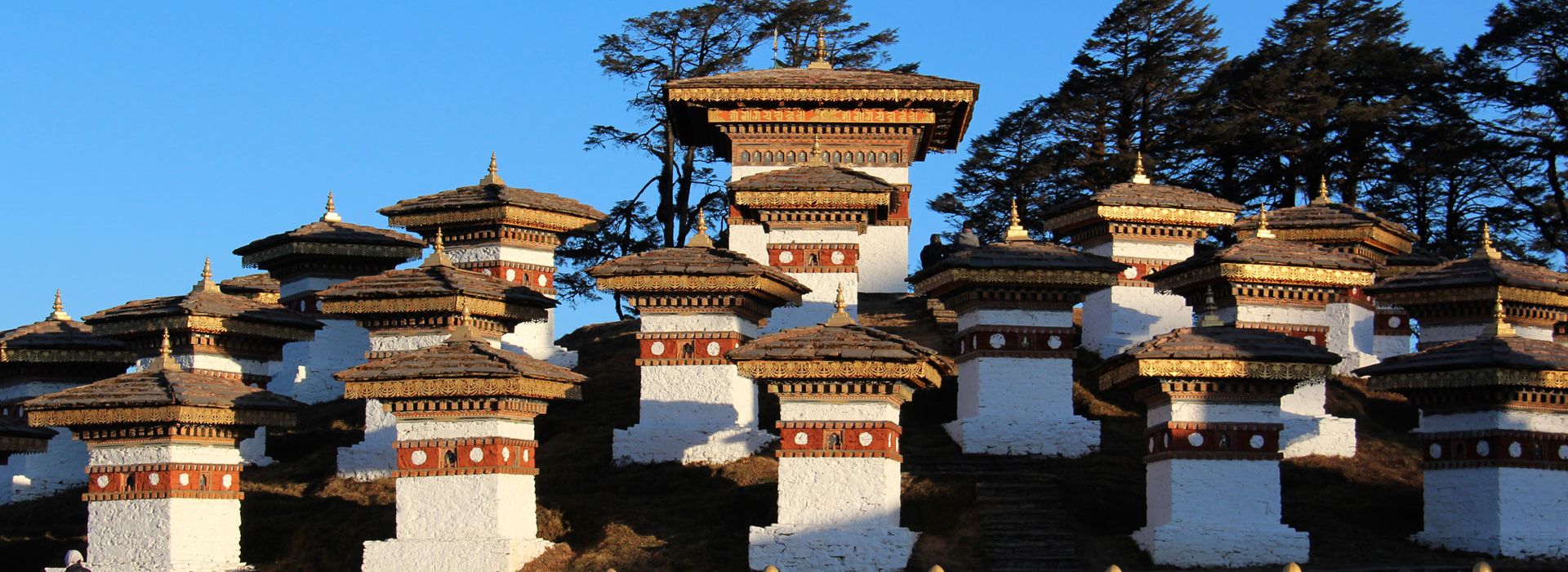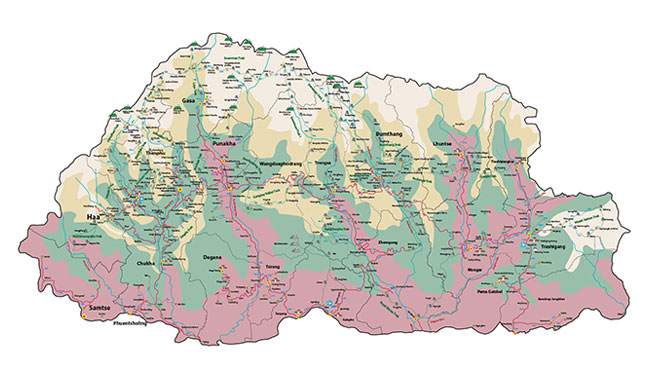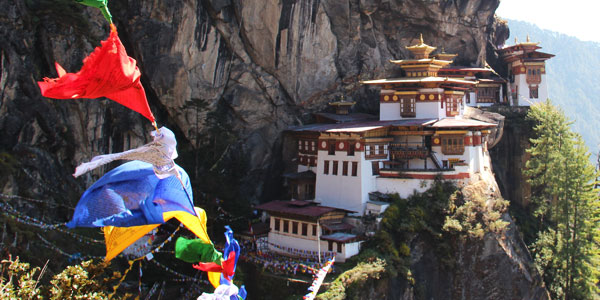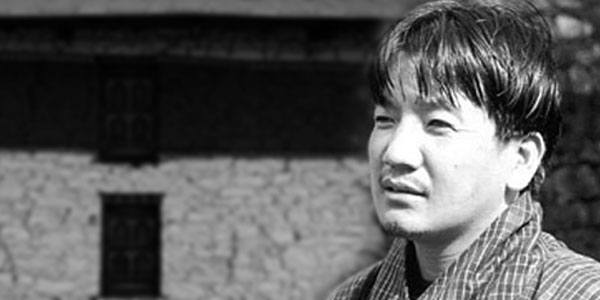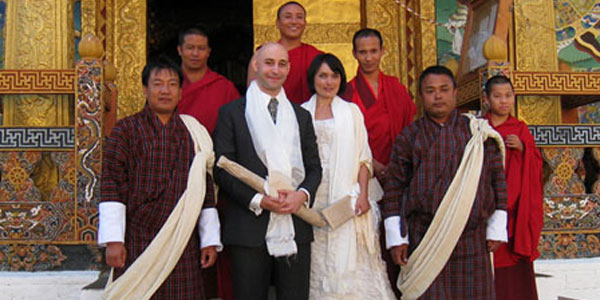Myth of Central Bhutan
9 Days 8 Nights
We explore western and central Bhutan. We land at Paro airport, scenically the most beautiful, having flown via awe-inspiring peaks of the Himalayas. We scour four districts in western Bhutan, and head towards the central which is known as the spiritual heartland of Bhutan. This tour provides arresting insights on Bhutanese culture, history, nature and environment, flora and fauna, and breathtaking views of Himalayan landscapes. All along, we also meet people from all walks of life.
Attraction
- In Paro, we see the castle-fortress at Rinpung, the ruins of the “Victory Fortress at Drugyel”, the National Museum, and the 7th century temple complex at Kurje. We hike to Taktshang monastery (Tiger’s Lair), an edifice on a sheer cliff wall 800 meters above the valley floor.
- In Thimphu, we visit the magnificent castle-fortress of Tashi Chho Dzong, the seat of power. Then we travel to other places of interest like the Memorial Stupa, traditional paper factory, Folk Heritage Museum, Textile Academy, Handicraft Emporium, the site of the world’s biggest Buddha statue, etc.
- In Punakha and Wangdue valleys, we visit the “Temple of Fertility” at Lobesa, the majestic Punakha castle-fortress flanked by “male” and “female” rivers, and Khamsum Yuelley Namgyel Stupa.
- Enroute into the interior, we look at the surrealistic valley of the cranes at Phobjikha, Gangtey Monastery, Trongsa Tower & Trongsa castle-fortress located atop a spur. In Bumthang, we savour the beauty of the valley and visit numerous sacred ancient temples including the “Burning lake” at Mebartsho, & Kurje Temple.
- Stroll around towns enroute and see Bhutanese culture by observing people, dress, language, customs, art and craft, etc.
Detailed Itinerary
Day 1: Paro–Thimphu
Fly into the Kingdom amid a breathtaking vista of the world’s highest mountains, a literal ascent into the heavens. The perennially snow-covered mountains we pass by during the flight include Mt Everest (the highest peak in the world), Kanchenjunga (the world’s third highest peak) and other peaks revered by the Bhutanese as the “Abode of the Gods”. Finally, land at Paro International airport, an adrenaline-rushing experience as we take a hair-raising descent onto a narrow strip of flatland flanked by the mountains.
A short respite after the landing, we begin our Bhutanese adventure. We visit historical places in and around Paro valley, a scenic sojourn in Bhutan’s most beautiful valley, followed by an hour-long drive to Thimphu, the capital city.
Day 2 :Thimphu sightseeing
The capital city is Bhutan in a miniscule. Its population of 130,000 people come from every nook and cranny of the Kingdom, providing a rare glimpse of a mix of culture, customs and traditions around which Bhutan has built its identity as a nation. Among the historical places, we visit the Memorial Stupa built in the finest tradition of Buddhist architecture, the 12th century Changangkha monastery which blesses every Bhutanese child born in Thimphu valley, and the 17th century Tashichhodzong that serves as the seat of the central government and also houses the office of the King. We can also see the parliament house where Bhutan’s political leaders meet and take decisions that chart out the country’s destiny.
Other attractions include short trips to the Folk Heritage Museum, Textile Academy, Academy of Art and Craft, the site of the world’s largest Buddha statue, and the Thimphu viewpoint at Sangaygang. Towards late afternoon, we will take a stroll around town and, probably, also see a traditional game of archery which is popular for its accompanying taunts and merriment.
Day 3: Thimphu – Punakha/Wangdue
Today, we head to the interior, to Punakha-Wangdue valley that is famous as the ancient capital of Bhutan and where the agrarian rural life is best exemplified by terraced rice fields and villages teeming with traditional farm houses. The first 45 minutes of drive takes us to Dochula pass (3,100m) which is perhaps the only stopover in the entire Himalayan region that affords a stunning view of the mighty and impregnable mountains on the roof of the world. From the pass, we begin a gradual descent through roadsides filled with rhododendrons, bamboo groves, other alpine flowers of all shades and hues, besides birds and numerous other fauna species along the way.
On touching the valley floor, we visit the Temple of Fertility in Lobesa which is renowned for blessing infertile couples with children, and the 17th century monastery-palace-fortress called Wangduephodrang Dzong that is being rebuilt after destruction by a tragic fire. But our main place of interest for the day is Punakha Dzong, a huge 17th century monastery-fortress plus ancient capital on whose corridors of power walked Bhutan’s ancient leaders who defined much of the Bhutanese history. The monument is spectacularly built between two rivers and appears like a giant ship sailing on a huge mass of water.
Day 4: Punakha-Bumthang
We head further interior, into the heartlands of medieval power and present-day spirituality. As we gently ascend through sub-tropical forests to the temperate and alpine belts, we reach our highest point at Pelele pass ((3,140m) from where we see the Black Mountain range. From there, the gradual descent takes us to Chendebji Stupa and then to the massive Trongsa Trong. This castle-fortress is the biggest, built without a single nail, contains some 30 temples and was, in the 19th century Bhutan, the bastion of power – the stronghold of Bhutan’s kings. Further up is the “Watch Tower” which is now designated as the “Museum of Bhutan’s Kings”. From here, we climb to Yotongla Pass (3,551m) and then drive downhill into the sprawling Bumthang valley.
Day 5: Bumthang
Bumthang valley is a blend of the abstract and the concrete with innumerable legends surrounding the region. Amazingly beautiful, Bumthang (literal meaning: valley of a thousand plains) is the spiritual center of Himalayan Mahayana Buddhism with temples and other sacred sites dating back to the 7th century.
Our first trip will be to Kurje Lhakhang where the Great Indian Saint Guru Padsambhava subdued a local demon and left his body imprint on a rock. Then we see Jampel lhakhang (7th century) built by Songtsen Goembo, the Tibetan Buddhist King, and the 17th century Jakar Dzong (the Castle of the White Bird). Other places to see include Tamshing Lhakhang built in 1501 by Terton Pema Lingpa who is renowned as one of the five king tertons (religious treasure discoverers), and Kenchosum Lhakhang. We also take a short hike to Mebartsho – the Burning Lake – where legend has it that Pema Lingpa took a dive into the depth of the lake with a butter lamp placed on his head and retrieved a religious treasure hidden by Guru Padmasambhava.
Day 6: Bumthang-Phobjikha
From Bumthang we retrace our journey and enter the glacial valley of Phobjikha (3,500m.) Here we see probably Bhutan’s biggest stretch of plains in the north which has been adopted by the elegant but endangered Black-Necked Crane as its winter home. There is an air of deep spirituality about this place as well as the iconic Gangtey Monastery, the seat of the revered Peling Branch of Vajrayana Buddhism, is located atop a mound here.
Day 7: Phobjikha-Paro
Day 8: Paro
In Paro, we visit the ruined “Fortress of Victory” at Drukgyal which, in 1644, repelled a Tibetan invasion which could have seriously compromised the sovereignty of Bhutan. Our last stopover for the day is the Kyichu Temple, built in the 7th century and thus the oldest and one of the most sacred in Bhutan. In popular myth, this temple was built to pin down the right knee of a giant ogress which was lying spread-eagled across the entire Himalayas.
Our best treat for the day is the hike to the ‘Tiger’s Nest’, a literal translation of Tak-tshang. This monastery edifice is precariously built on a sheer wall of granite cliff some 1,000 metres above the valley floor. Some say, it was built with the help of celestial nymphs in the 17th century for, otherwise, it is beyond human feat. This temple complex houses many caves, one among which is the site where the great Tantric saint – worshipped in the Himalayan Buddhist world as the “Second Buddha” – came riding on a tigress in the 8th century to destroy evil spirits and anoint the grounds to spread the Buddha, Dharma and Sangha.
Day 9: Paro-Departure
Gallery
Tour Facts
- Duration: Sixteen Nights Seventeen Nights
- Season: Throughout year
- Tour Starts: Paro
- Tour Ends: Paro
- Places of Visit: Paro, Thimphu, Punakha & Wangdue valleys, Phojikha, Trongsa & Bumthang.
- Group Size: 1 pax & above
Package Includes
3-star plus hotels, three meals, SUV/mini bus/coaster, guides, entry fees, mineral water, cultural program (in groups of 10 or more people), and taxes.
Package Excludes
Air tickets, travel insurance, drinks, visa fee & laundry.
